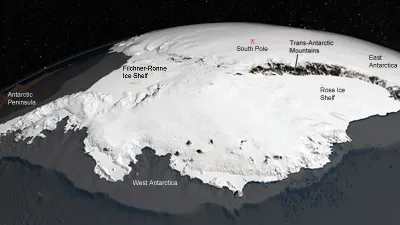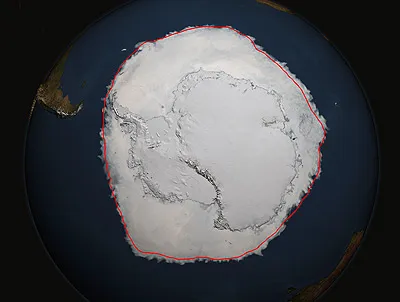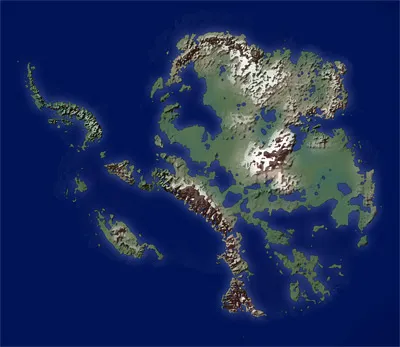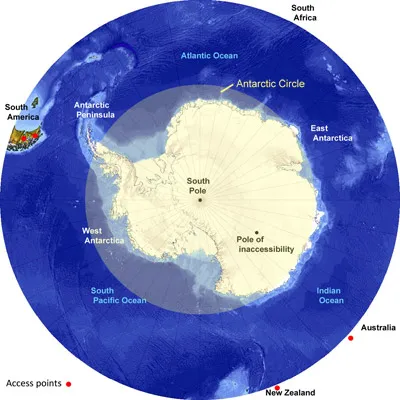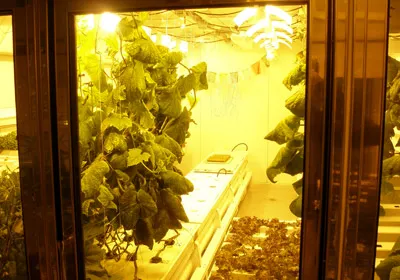Is it realistic for Antarctica to be populated by people in large numbers? What might lead to this?
What if we all had to move to Antarctica?
Antarctica What Ifs ? - Almost definitely won't-happens, but what if some unlikely things did theoretically happen in Antarctica?
What if all the ice melted? | What if we had to move there? | What if Antarctica was green? | What if Antarctica was a country?Scenario 1 - Antarctica is Still Frozen
A nuclear apocalypse or maybe a pandemic much more deadly than covid-19 with no vaccine available, so mankind has to retreat to Antarctica as the one safe place left on planet earth.
An easy one this, it would be unpleasant and short as we wouldn't be able to last long, then we'd either die or have to go back and see what the world we left is like and hope it had got better.
97% of Antarctica is covered in permanent ice leaving a relatively small amount that is bare rock in the summer at least. There are very few plants in Antarctic compared to the rest of the world, most are lichens or mosses with just two species of flowering plants, one of which is a grass, their growth is patchy and low ( a few cm), there are no shrubs and no trees.
Antarctic soils are virtually non-existent on the larger scale (fields, meadows) and what soils there are, are mostly poor and impoverished, low in nutrients, very low in organic matter and unproductive. There are some richer soils around penguin colonies where the penguin droppings mix with the soil to supply nutrients, though these are always always completely trampled by penguins so preventing plant growth.
There's also the fact that it's very cold and very few plants will grow outdoors in Antarctica that aren't already there. Any form of agriculture would need extensive protection from the elements with supplementary heating year round and lighting through the dark winter months.
Current habitation in Antarctica is on a number of scientific research stations where people stay from a few months up to (rarely) two years at a time. These are supplied entirely by the country running the stations, all fuel and food is brought in, nothing of much substance is grown there (there are some limited hydroponic facilities supplying fresh herbs and some salad vegetables) and none of the local animal life (if there is any) is taken as food.

The British Halley
Bay station, entirely supplied by ship from outside Antarctica,
the only local resource used is freshwater from melted ice.
Explorers have lived off the land in Antarctica to supplement their diets with fresh meat, or on occasion through necessity if they have found themselves stranded. Penguins and seals are good enough to keep you alive for months but the diet is monotonous and unhealthy over even this term, they would also run out pretty quickly with a large population.
Could we realistically live in Antarctica as it is today for any length of time? No.
Scenario 2 - Antarctica is Clear of Ice
If Antarctica's ice has gone and isn't going to re-freeze it's because global temperatures have risen to a point where large areas of the hotter places will become uninhabitable, where coastal cities are under water and low lying coastal land is lost due to the 70m (230 feet) rise in sea-levels from all that ice. Billions of people will be displaced.
But we have a "new" continent recently exposed and now without an ice covering, it is potentially warm enough to grow crops, how realistic would moving there be?
The biggest issues are going to be the total lack of any infrastructure and then the lack of productive soils for farming.
There are plenty of places in the world, especially in what are now northern temperate regions where the land was covered by glaciers in the past that is now rich productive farmland. In this case however it took thousands of years for bare sediments to build up soils that have and retain nutrients, have a good organic content and a healthy balance of soil organisms. Starting from scratch there would be plenty of sediments from fine clays to sand to gravel but it would be starting from nothing as a plant substrate.
Agriculture would be unusual in that despite now being warmer, Antarctica would still be subject to its extreme changes of daylength over the year. Anywhere inside the Antarctic circle would get at least some days of the year with 24 hour daylight in summer and 24 hour darkness in winter, the length of these periods increasing as you get closer to the pole. Most of Antarctica is inside the Antarctic Circle and those parts that aren't, mostly 500km at the tip of the Peninsula, are still subject to changes in daylength over the year that would be extreme any where else in the world.
There is some, though little, agriculture that takes place at extreme northern latitudes, so it is possible and it is certainly possible to have soils that build up through the action of trees, shrubs and mosses in polar latitudes. It is the cold more than daylight that limits northern agriculture at the moment. While daylight is much longer in the summer months, the light is less intense for much of the time than it is at lower latitudes, the 24 hours of polar light more than compensates for the lack of intensity over a short period, so the result is an extreme seasonality of the growing season and just the one crop a year, and no slow growing crops at that.
The main problem is going to be time taken for soils to build up structure and nutrients on the larger scale. Areas of artificial or enhanced soils are going to be small compared to what is needed. Expensive and so commercially viable herbs, micro-vegetables and salads might be successfully raised hydroponically, but other than experimentally perhaps, calorie dense crops such as potatoes, wheat and rice aren't and would be needed in farm-sized quantities rather than as an occasional bijou restaurant treat.
Fertilisers would also be needed in enormous quantities to grow crops in what will probably be very poor soils, though there may be areas of nutrient rich sediments especially around the areas of volcanic activity that are currently buried by miles of ice.
Minerals
On the positive side, Antarctica is thought to have significant mineral deposits that are just not available at the moment because they are covered by miles of ice. With the ice gone, they would be more readily available and as they have never been worked at all the easiest to get at, highest grade ores are all still there. This would help with being able to build infrastructure but would need a lot of effort to start to access and process the minerals.
Could we realistically live in Antarctica once if the ice cover completely melts? Yes, but it would take a lot of time and effort to bring things to a sustainable position, the real difficulty would be to survive that initial period when we were trying to make it work, which might not be possible for more than just a relatively small number.
Picture credits: Antarctica ice removed - Memtgs, used under Creative Commons Attribution licence 3.0 Unported licence /

